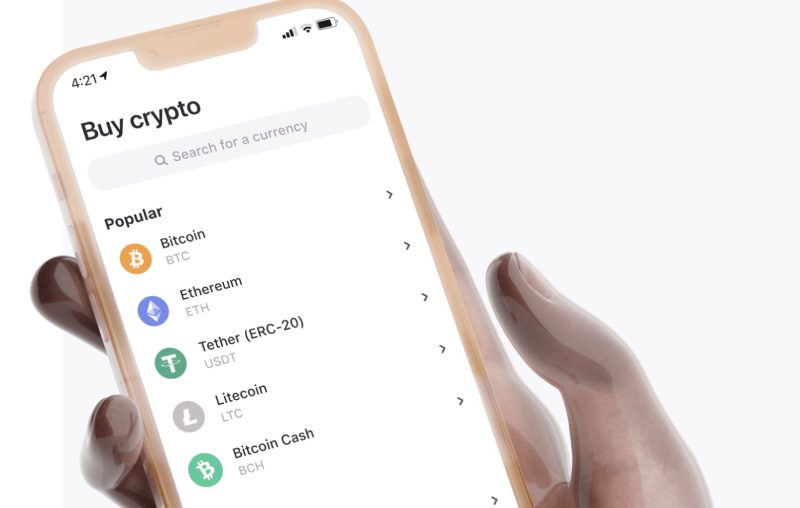
Cryptocurrency Growth Over The Years & Trends
Cryptocurrencies exist since 2008 when Bitcoin was created. What started as an unknown piece of technology turned into a big digital market thanks to significant advancements and great popularity. This is a revolutionary technology that changed the finance world.
Even today, cryptocurrencies are the source of great controversy. The numbers change every day and new coins constantly appear on the market. That being said, let’s see how and why these digital currencies caused an uproar in the world.
Understanding Cryptocurrency
Cryptocurrencies are assets that are available solely digitally. They use cryptography, a technique that encrypts data and provides a high level of security. They have no intrinsic value, which means that crypto is not redeemable for commodities like gold, or issued by a central authority.
As such, cryptocurrencies are not legal tender.
We originally knew cryptocurrency as a haven for money launderers and criminals. Many saw these as the currency for the rich only, or as a very risky option. Digital currencies have come a long way. Nowadays, cryptocurrencies have powerful applications in different sectors ranging from finance to media to healthcare.
Because of the unexpected rise and the unique approach, cryptocurrencies remain controversial. Some see them as the future of the world of finance, while others see them as risky and evil. For one person that declares them as a good investment, there’s a person that considers them a bad thing.
Simply put, this all started as a new fintech trend. However, the numbers and popularity throughout the years paint an entirely different picture. Today, this revolutionary technology is challenging the economic, social, and political underpinnings of society.
Why People Buy Cryptocurrencies
There are many reasons why the crypto market is so popular today. Here are some of the reasons why people buy them or invest in them:
- Pseudonymity. Purchasing anything with cryptocurrencies must take place online and the buyer doesn’t have to disclose their banking details or even identity. They offer pseudonymity, which refers to a near-anonymous state.
- Peer-to-peer transactions. Another great benefit of this currency is that it doesn’t involve any financial institutions or, as we’d like to call them, the ‘middleman’. This equals lower transaction costs and eliminates any need to use traditional systems such as banks.
- High security. Since these aren’t stored in banks or similar institutions, the risk of someone stealing your money is much lower. Still, they are not completely immune from such threats. Let’s take, for example, the DAO (Decentralized Autonomous Organization)’s hacking incident. Hackers managed to gain control of over $55 million and even though most of it was restored, this proved that crypto is safer, but not immune.
Cryptocurrency Advancements Over The Years: The Technology Explained
If we are to understand how cryptocurrency works, we need to understand the technology behind it. Let’s start by explaining the crypto exchange.
Cryptocurrency Exchanges
Let’s say that you want to buy Bitcoins. How do you do this? You can’t exactly go to a store and buy them or make a purchase on an ordinary website.
This is done on cryptocurrency exchange websites where people buy, exchange, or sell their coins for other cryptocurrencies or traditional currencies. One such site is Moonpay, where you can use your credit card to make a fast BTC purchase (if you want to learn how to do it, read their guide on how to buy Bitcoin with credit card here).
Such exchanges trade hundreds of millions every day. They are subject to regulations set by the governments they operate within, so if you want to use them, you need to provide proof of identity when you open your account.
But, how are these coins stored online and who tracks the transactions?
It all starts with blockchain.
Blockchain
Blockchain relies on a continuously updating, public ledger that records all transactions. These are processed without central authorities like payments companies, banks, or the governments. Both sides, the buyer and the seller directly interact with each other and proceed with the transaction. This makes cryptocurrency decentralized.
Blockchain was a part of Bitcoin and exists since 2009. Today it has many applications in the world. CB Insights has recently identified at least 27 ways that blockchain is used in banking, voting, academics, and cybersecurity.
According to the World Economic Forum, around 10% of the global GDP will be stored on this technology by 2027.

That’s how crypto is spread from one person to another, but how are new coins created?
Mining
The answer to this lies in ‘mining’. Mining is where transactions are verified and new coins are created. Over the years, this has changed tremendously. There are now many ways to mine cryptocurrency from big and powerful computers to small routers that people use to mine at home.
A big portion of mining is done collectively because it uses tremendous amounts of power. Today, miners often join pools to create more computing power and mine more coins. They use specialized hardware and seek cheap electricity to verify pending transactions and get high profits.
Today, the largest mining pool is AntPool, which controls over 19% of all mining. China is the place where most of it happens – over 70% of the crypto mining is done in China and most of the equipment is manufactured there.
Let’s say that you bought or mined some coins. Where do you keep them?
Crypto Wallets
Cryptocurrency wallets are another important technology in the crypto world today. There are tons of options for users nowadays. You can read all about them on cryptocurrency tips websites, as well as find information on the trending coins in the world at the moment.
These wallets are similar to electronic wallets where you store money with the difference that you can use them to store cryptocurrency. Another difference is that they can be both software and hardware.
The wallets of today have made storing and managing digital currencies easier and much safer. For example, there are crypto wallets in the form of a USB thumb drive such as the Ledger wallet that you can connect to your computer’s port when you want to access your coins.
In this case, the balances and transactions for your account are stored in the blockchain, but you need to use a private key stored inside your Ledger wallet to see or use them.
In contrast, you can store them in a software wallet and keep them online. In this case, you rely on the wallet company to keep your data and coins safe. Such companies take the strictest security measures to ensure that their customers’ data is not at harm.
The Trending Cryptocurrencies Of Today
In the beginning, it was only Bitcoin, followed by a few others used by a small number of people. Today, there are thousands of cryptocurrencies that can be split into two major categories. The first includes coins used to purchase goods and services. The latter includes coins that allow for the creation of agreements called ‘smart contracts’, enforced via code rather than court.
Right now, there’s no supreme digital currency since the numbers change tremendously. Yes, Bitcoin and Ethereum remain the most popular ones and still comprise the majority of the market share in digital currencies.
However, we’ve witnessed big downfalls and increases in these and many others, which leaves us with lots of calculations, guesses, and hopes for our preferred coins.

Finally, let’s discuss the trending cryptocurrencies of today and their history.
Bitcoin
Bitcoin was created by a person or group under the alias Satoshi Nakamoto. This is the oldest and most popular cryptocurrency. It’s accepted all around and by companies like Microsoft, Subway, and Expedia. It is available on many websites including casinos worldwide.
This coin still comes with some limitations. Compared to Visa which handles thousands of transactions every second, Bitcoin processes only seven. Due to its high demand, it’s also slower in approving transactions. This has recently been reflected in its market share which fell from 81% in June of 2016 to nearly 40% two years later.
Ether And Ethereum
The Ethereum blockchain has become greatly popular in the last decade or so. In August of 2017, the market capitalization of this coin was around $28 billion and many estimated that it will soon reach Bitcoin’s popularity.
There were some issues with the technology that caused some declines in value, and in 2018, this coin also experienced a plummet. However, the numbers seem to be growing today and Ethereum is coming very close to Bitcoin.
Other Trending Cryptocurrencies
Some other trending cryptocurrencies are Litecoin (2011), Ripple (2012), Dash (2014), and ZCash (2016). These are building their story as we speak, becoming more popular on the market, and taking more of their share every day.

Would You Invest In Cryptocurrencies?
Cryptocurrencies have changed tremendously over the years. The advancements since the inception of these coins are incredible, and we can only expect a bigger choice of coins, wallets, and improved security in the years that follow.
Just as the number of coins changes, so do the regulations to keep users safe. Digital currencies become more accepted every day. Knowing what you know right now, would you invest in them?

Tech-Savvy Tips for Enhancing Your Digital Infrastructure

Balancing Business Leadership and Travel: Tips for Success







